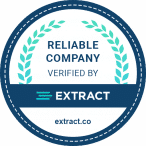Creating a successful web app needs a good tech stack. A well-chosen tech stack ensures your app is scalable, secure, and performs well. But, a bad choice can cause maintenance headaches and slow things down.
When picking the right tech, you must know your project’s scope and needs. You should think about the frontend and backend, and what database to use. It’s also important to consider your team’s skills, how much your app will grow, and its security.
By understanding these points, developers can pick the best tech stack. This makes sure their web app is strong, grows well, and is safe.
Table of Contents
Key Takeaways
- Understand your project’s scope and requirements.
- Consider frontend and backend technologies.
- Choose appropriate database solutions.
- Ensure scalability and security.
- Align tech stack with development team’s expertise.
What Is a Tech Stack and Why Does It Matter?
A tech stack is the core of any web app. It’s made up of different technologies that work together smoothly. This includes programming languages, frameworks, libraries, and tools for building and running web apps.
Definition and Components of a Tech Stack
A tech stack has three main parts: frontend technologies, backend technologies, and database solutions. Frontend techs handle the app’s look and feel, using JavaScript and CSS frameworks. Backend techs power the app, using server-side languages and frameworks like Node.js and Express.
| Component | Description | Examples |
|---|---|---|
| Frontend Technologies | User interface and experience | React, Angular, Vue, CSS frameworks |
| Backend Technologies | Server-side logic and database integration | Node.js, Python, Ruby, Express, Django |
| Database Solutions | Data storage and management | MySQL, PostgreSQL, MongoDB |
The Impact of Tech Stack on Project Success
The tech stack you choose can greatly affect a project’s success. It influences development speed, scalability, security, and maintenance costs. A good tech stack can make development faster, improve app performance, and save money in the long run. But, a bad choice can slow down development, increase costs, and pose security risks.
Understanding Your Web App Requirements
The first step in choosing the right tech stack is to understand your project’s scope, goals, and technical needs. This step is key because it affects the technologies you’ll use for your web app.
Defining Your Project Scope and Goals
Start by defining your project’s scope and goals. This means outlining the key features and functionalities your app will have. You also need to know your target audience and their needs.
- Identify the primary purpose of your web application.
- Determine the core features and functionalities required.
- Establish clear, measurable goals for your project.
By defining your project scope and goals clearly, you can pick a tech stack that fits your project’s needs. This increases your chances of success.
Identifying Technical Requirements and Constraints
After defining your project, identify the technical requirements and constraints. These include scalability needs, performance requirements, and integration needs.
- Scalability needs: Will your application need to handle a large number of users?
- Performance requirements: Are there specific speed or responsiveness requirements?
- Integration needs: Will your application need to integrate with third-party services or existing systems?
Understanding these technical requirements is crucial. It helps you choose a tech stack that meets your project’s needs now and in the future.
Balancing Business Needs with Technical Possibilities
Finally, balance your business needs with the technical possibilities of different tech stacks. Consider development cost, time-to-market, and the availability of skilled developers. Also, think about the technical capabilities of various tech stacks.
By carefully weighing these factors, you can make a decision that meets your business goals and technical requirements. This ensures the long-term success of your web application.
Frontend Technologies: Building the User Interface
Frontend technologies are key in making web apps engaging and interactive. The frontend, or client-side, handles everything users see and use. It’s crucial for a good user experience.
JavaScript Frameworks: React, Angular, and Vue
JavaScript frameworks are vital for creating dynamic user interfaces. React, from Facebook, is known for its component-based design and virtual DOM. This makes it great for complex apps.
Angular, by Google, focuses on structure and scalability. Vue.js is loved for its balance of simplicity and functionality. Each framework has its own strengths, fitting different project needs.
CSS Frameworks and Preprocessors
CSS frameworks like Bootstrap and Tailwind CSS offer pre-made UI components and utility classes. Bootstrap is famous for its grid system and wide component library. Tailwind CSS, on the other hand, focuses on utility classes for more styling control.
CSS preprocessors like Sass and LESS add features like variables and mixins to CSS. This makes managing complex styles easier. It helps in writing cleaner, more modular CSS code.
Modern Frontend Development Tools
Modern frontend development is aided by various tools that boost productivity and code quality. Webpack is a module bundler that optimizes code for production. Babel compiles JavaScript to ensure it works in older browsers.
ESLint enforces coding standards and catches errors early. These tools, along with JavaScript and CSS frameworks, make up a complete frontend development toolkit.
Backend Technologies: Powering Your Application
Choosing the right backend technologies is key to a strong web app. These technologies handle server-side logic, database work, and API connections. They make your web app work smoothly.
Server-Side Languages
Server-side languages are crucial for app performance and upkeep. Node.js is great for fast, event-driven apps. Python is simple and has lots of libraries. Ruby is known for Ruby on Rails, PHP has a big community, and Java is for big enterprise apps.
Each language has its own strengths. For example, Node.js is perfect for apps that need to update quickly. Python is great for apps that work with lots of data.
Backend Frameworks
Backend frameworks help build scalable systems. Express is for Node.js, Django and Flask for Python, Rails for Ruby, Laravel for PHP, and Spring for Java. They offer tools for common tasks, making development easier.
Express is simple and good for APIs. Django has an ORM (Object-Relational Mapping) system for easier database work.
API Development and Management
APIs are key for modern web apps, letting services talk to each other. Good API development means designing RESTful APIs and checking their performance.
| Backend Technology | Description | Use Cases |
|---|---|---|
| Node.js | JavaScript runtime for server-side execution | Real-time applications, microservices |
| Python | High-level language for general-purpose programming | Data science, machine learning, web development |
| Ruby | Dynamic language known for Ruby on Rails framework | Web development, rapid prototyping |
| PHP | Mature language for web development | Content management systems, e-commerce platforms |
| Java | Robust language for enterprise applications | Android apps, enterprise software, web applications |
Database Solutions: Storing and Managing Data
Choosing the right database is key for web app development. The database stores, manages, and retrieves data well.
It’s important to know the different database types. Relational and NoSQL databases have their own strengths and uses.
Relational Databases: MySQL, PostgreSQL, and SQL Server
Relational databases, or SQL databases, organize data in tables. MySQL, PostgreSQL, and SQL Server are well-liked choices.
- MySQL is reliable and easy to use, great for web apps.
- PostgreSQL supports complex data and has strong security.
- SQL Server from Microsoft offers high performance and integration with other Microsoft products.
NoSQL Databases: MongoDB, Redis, and Firebase
NoSQL databases handle big amounts of unstructured data. MongoDB, Redis, and Firebase are top picks.
- MongoDB is document-oriented, flexible, and scalable.
- Redis is an in-memory data store for fast performance.
- Firebase includes a NoSQL database for real-time data and offline support.
Choosing Between SQL and NoSQL
Choosing between relational and NoSQL databases depends on your project’s needs. Think about these factors:
- Data Structure: Relational databases are good for structured data and complex transactions.
- Scalability: NoSQL databases are better for unstructured data and scaling.
- Development Speed: NoSQL databases are often faster to develop with.
Understanding your project’s needs and the strengths of each database type will help you decide.
Popular Tech Stack Combinations
Developers love certain tech stack combinations for their speed and growth potential. These mixes are picked based on the project’s needs. They balance how fast it can be made, how well it works, and how easy it is to keep up.
MEAN/MERN Stack
The MEAN/MERN stack is a top pick for web apps today. It uses MongoDB for data, Express.js for the backend, and React or Angular for the front. Node.js runs it all.
This stack is great because it’s all JavaScript. This makes coding easier. It also performs well, thanks to Node.js and MongoDB. Plus, you can choose between React and Angular for the front end.
It’s perfect for apps that need to work fast and grow quickly.
LAMP Stack
The LAMP stack is made of Linux, Apache, MySQL, and PHP. It’s been around for a while and is still very popular. It’s known for being stable and having a big community of users.
It’s also open-source, which saves money. And it works well in many hosting setups, thanks to Linux and Apache.
Even though it’s not as new as some other stacks, LAMP is still a solid choice. It’s great for apps with complex backends.
JAMstack and Serverless Architectures
JAMstack and serverless are new ways to make web apps. JAMstack is all about:
- Pre-rendering pages for better speed
- Separating the front end from the back end
- Using APIs for live data
Serverless means you don’t have to worry about servers. This lets developers just write code. Both JAMstack and serverless make apps faster, safer, and more scalable.
They’re becoming more popular because they make coding and app performance better.
Choosing the Right Tech Stack for Your Web App
Choosing the right tech stack is crucial in web app development. It affects both now and the future. The tech stack includes technologies, tools, and programming languages for your web app. Making the right choice can greatly impact your project’s success and growth.
Matching Technologies to Business Requirements
The first step is to match your tech stack with your business needs. You need to know what your project needs to do and how it should work. For example, if your app needs to handle complex data, you’ll need strong data processing tools.
Also, if your app must be very secure, choose technologies known for their security.
To match technologies with your business needs, consider these steps:
- Identify what your web app needs to do
- See what technical skills are needed to support these needs
- Look at how different technologies can meet these needs
Balancing Innovation with Stability
Finding a balance between new and stable technologies is key. It’s tempting to use the newest tech, but think about its maturity and risks. Stability is also vital to keep your app reliable and fast.
To balance innovation and stability, follow these steps:
- Keep up with new tech and trends
- Think about the benefits and risks of new tech
- Consider how your tech choices will affect your app in the long run
Cost Considerations in Tech Stack Selection
Cost considerations are important when choosing a tech stack. Different techs have different costs, like licensing fees and hiring costs. It’s important to weigh these costs to make sure your tech stack is affordable.
When looking at costs, think about:
- Licensing and subscription fees for tech
- Costs for infrastructure and upkeep
- Costs for training or hiring experts
By carefully thinking about these points and matching your tech stack to your business needs, you can make a smart choice. This choice will help your project succeed and grow in the long run.
Scalability Considerations
A scalable tech stack is key for your web app to grow. It’s not just about more traffic. It’s about keeping performance high and user experience smooth.
Vertical vs. Horizontal Scaling
There are two main scaling options: vertical and horizontal. Vertical scaling means making your servers more powerful. This can be expensive and limited by hardware.
Horizontal scaling adds more servers to share the load. It’s flexible and cost-effective but needs better management.
Technologies That Scale Well
Some techs scale better than others. Cloud-native technologies and microservices architecture scale well. Docker and Kubernetes help manage scalable systems.
Experts say, “Cloud-native techs help build scalable apps efficiently.”
“The cloud-native approach allows for greater scalability, resilience, and flexibility, enabling businesses to innovate and grow rapidly.”
Planning for Future Growth
Planning for growth means thinking about future needs. Monitor performance and plan for scaling.
Choosing the right tech and planning well keeps your app fast and user-friendly as it grows.
Security Implications of Your Tech Stack
The security of your web app depends a lot on your tech stack. Each tech has its own security level. Knowing this helps keep your app safe.
Look at all parts of your tech stack, like frontend, backend, databases, and third-party services. Each part can have its own security risks if not handled right.
Common Security Vulnerabilities by Stack
Every tech stack faces different security threats. For example, some JavaScript frameworks might be more at risk for cross-site scripting (XSS) attacks. Others might face SQL injection threats.
Knowing these risks helps you fix them. For instance, React can help fight XSS attacks with its sanitization tools. Using prepared statements in SQL can also lower SQL injection risks.
Security Best Practices for Different Technologies
Using the right security practices is key to protecting your app. This includes things like checking user input, storing passwords securely, and keeping up with updates. Each tech needs its own set of security steps. For example, Node.js apps might need a Web Application Firewall (WAF) to fight common attacks.
Also, keep up with the latest security patches and updates for your tech stack. Keeping your dependencies and frameworks current helps block known vulnerabilities.
Compliance and Regulatory Considerations
Security isn’t just about tech; it’s also about following rules and laws. Depending on your field and the data you handle, you might need to follow GDPR, HIPAA, or PCI-DSS. Making sure your tech stack meets these rules is vital to avoid legal and financial trouble.
This means more than just using the right tech. You also need to make sure your development and data handling practices follow the rules.
Development Team Expertise and Learning Curve
Choosing the right tech stack is all about your team’s skills and how quickly they can learn. The know-how and flexibility of your team greatly affect your web app’s success.
Leveraging Existing Team Skills
Using your team’s current skills can make development faster. Picking tech they know well saves time and money on training.
If your team loves JavaScript, using MERN or MEAN can be smart. It boosts productivity and project quality.
Evaluating Training Needs and Resources
It’s key to look at your team’s training needs too. Knowing what resources you need for training helps you choose the right tech stack.
When checking training needs, consider these:
- How easy it is to find training resources and guides
- How long it takes for team members to learn
- The cost of training and how it affects your budget
Building vs. Hiring Expertise
Deciding to train your team or hire new talent is a big choice. Both have good and bad sides, as shown in the table below.
| Approach | Pros | Cons |
|---|---|---|
| Building Expertise | Keeps your team, saves on hiring costs | Needs a lot of training, might slow you down |
| Hiring Expertise | Brings in new skills, saves time on training | Costs money, might be hard to fit in with your team |
Choosing to train or hire should match your project’s needs, budget, and schedule. Thinking about your team’s skills and learning curve helps you make the best choices for success.
Maintenance and Long-Term Support
Maintenance and long-term support are key to a web app’s success. They keep the app stable and secure. A well-kept app meets user needs and stays competitive.
Community Support and Documentation
Having community support and detailed documentation is vital. Community support helps solve problems fast. It uses the shared knowledge of many developers.
For example, React and Angular have great docs and forums. These resources are crucial for your app’s health.
Long-Term Viability of Technologies
Choosing a tech stack means thinking about its long-term viability. You need to know if it will be supported and updated.
| Technology | Community Support | Update Frequency |
|---|---|---|
| React | High | Regular |
| Angular | High | Regular |
| Vue.js | Medium | Regular |
Update Cycles and Technical Debt
Managing update cycles and technical debt is vital. Regular updates keep your app secure and up-to-date.
Technical debt is the cost of quick fixes that need revisiting. It’s important to balance new features with managing debt. This keeps your app maintainable and scalable.
Emerging Technologies and Future Trends
The world of web development is always changing. New technologies are coming that will change the game. It’s important to know what’s next for web apps.
Progressive Web Apps and Mobile-First Development
Progressive Web Apps (PWAs) are becoming more popular. They give users a smooth, app-like experience right in their browsers. PWAs are fast, reliable, and work for anyone with a web browser.
- Offline capabilities and background sync
- Push notifications for re-engagement
- Home screen installation without app store
Designing for mobile first is key. This means making web apps work best on phones. Most people use phones to go online.
AI and Machine Learning Integration
AI and ML are changing how businesses talk to users. They make web apps smarter, like with personalized tips and chatbots. This makes users happier and more engaged.
Key applications include:
- Personalized content and product recommendations
- Intelligent chatbots for customer support
- Predictive analytics for informed decision-making
Web3 and Blockchain Technologies
Web3 and blockchain are making the internet more open. They help make transactions safe and clear. This opens up new chances for web apps, like with money and smart contracts.
As these new techs grow, they’ll shape web development’s future. Developers who keep up can make better, more fun, and safe web apps.
Conclusion
Choosing the right tech stack for your web app is key to its success. It’s important to think about what your project needs, how it will grow, and how secure it will be. Also, consider your team’s skills.
A good tech stack can make your app run better, save money, and give users a great experience. Keeping up with new tech trends is also vital.
The secret to picking the right tech stack is to match your business goals with what’s possible. Make sure your chosen tech fits your project’s needs and that your team can work with it.



















